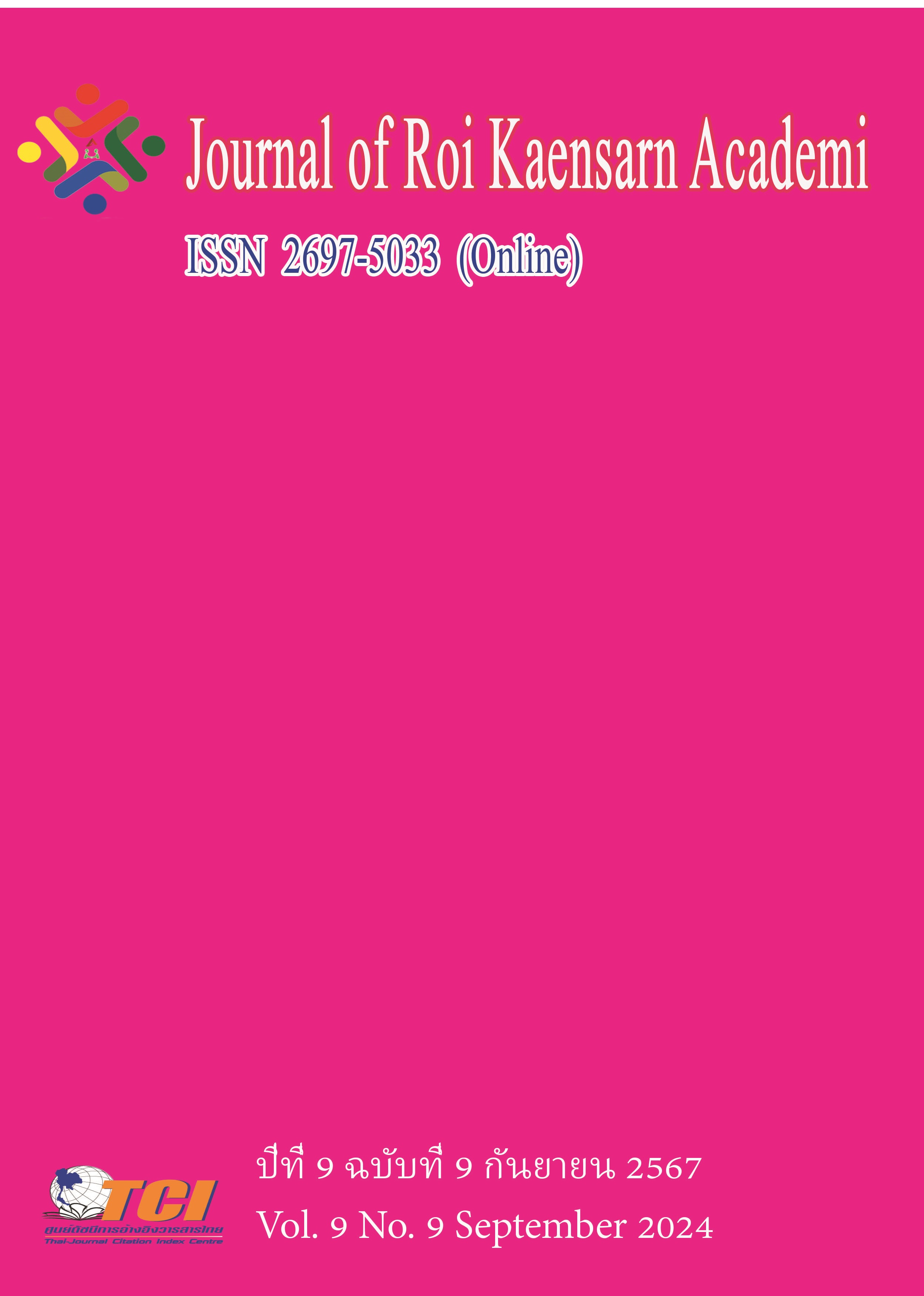การวิเคราะห์เครื่องหมายแสดงออกเรื่องเพศในหนังสือเรียนภาษาอังกฤษ ในฐานะภาษาต่างประเทศ
Main Article Content
บทคัดย่อ
โดยทั่วไปแล้ว นักเรียนทั้งเพศชายและหญิง จะแสดงออกถึงความสนใจในอาชีพ บทบาท และความรับผิดชอบตามธรรมเนียมที่ปฏิบัติกันมา นักเรียนหญิงมีแนวโน้มที่จะแสดงถึงความหลากหลายในความชอบบทบาทความชอบด้านอาชีพมากกว่านักเรียนชาย ความเป็นชายจะปรากฏร่วมกับความแข็งแรง พลัง และหน้าที่ ส่วนใหญ่ นักเรียนจะรับแนวคิดนี้มาจากสิ่งรอบตัวในโรงเรียน การศึกษาวิจัยนี้จึงมีวัตถุประสงค์เพื่อ 1) สำรวจรูปแบบเครื่องหมายแสดงออกเรื่องเพศในหนังสือเรียนภาษาอังกฤษในฐานะภาษาต่างประเทศ และ 2) วิเคราะห์หนังสือเรียนภาษาอังกฤษในฐานะภาษาต่างประเทศ ว่าแสดงถึงความลำเอียงทางเพศอย่างไร หนังสือเรียนที่เลือกมาวิเคราะห์มี 3 เล่ม การศึกษาวิจัยนี้ใช้วิธีการวิจัยแบบผสมผสานระหว่างการวิจัยเชิงคุณภาพและการวิจัยเชิงปริมาณเพื่อตรวจสอบ 1) การปรากฏเรื่องเพศในตัวหนังสือและภาพประกอบ 2) การปรากฏก่อน และ 3) บทบาทและหน้าที่ภายในครัวเรือนและบทบาทด้านอาชีพ เครื่องมือที่ใช้ในการเก็บข้อมูลเชิงปริมาณ ได้แก่ แผ่นบันทึกข้อมูล ข้อมูลเชิงคุณภาพจะได้มาจากการวิเคราะห์เนื้อหา ผลการวิจัยพบรายละเอียดต่อไปนี้ 1) หนังสือเรียนแสดงคุณลักษณะของทั้ง 2 เพศ อย่างไรก็ดี มีการแสดงออกถึงเพศชายบ่อยกว่าเพศหญิงทั้งในตัวหนังสือและภาพประกอบ 2) การปรากฏก่อนแสดงให้เห็นว่า เพศชายจะได้รับการกล่าวถึงก่อนเพศหญิงมาก 3) เครื่องหมายแสดงออกด้านบทบาทและหน้าที่ภายในครัวเรือน พบว่า หนังสือเรียน 2 เล่มมีผลการวิเคราะห์ที่ตรงข้ามกัน ส่วนบทบาทด้านอาชีพ อาชีพของเพศหญิงจะมีความหลากหลายน้อยกว่าเพศชายและถูกจำกัดตามทัศนคติที่มีเฉพาะประเภท
Article Details
เอกสารอ้างอิง
Abdelhay, B. & Benhaddouche, W. (2015). Gender Stereotyping through Textbook Illustrations: A Case Study of Algerian Middle School Textbook-Spotlight on English 1. Mediterranean Journal of Social Sciences. 6 (5), 435-440.
Albers, P. (2000). Visual Discourse Analysis. In pp. 85-98. P. Albers, T. Holbrook, and A. S. Flint (Eds.), New Methods of Literacy Research. UK: Routledge.
Ansary, H. & Babaii, E. (2002). Universal Characteristics of EFL/ESL Textbooks: A Steps towards Systematic Textbook Evaluation. The Internet TESL Journal, 3 (2). RetrievedOctober 17, 2021 from http://iteslj.org/Articles/Ansary-Textbooks/
Ansary, H. & Babaii, E. (2003). Subliminal Sexism in Current EFL/ESL Textbooks.https://www.researchgate.net/publication/310604379_Subliminal_sexism_in_current_EFLESL_textbooks
Bem, S. (1981). Gender Schema Theory: A Cognitive Account of Sex Typing. PsychologicalReview, 88, 354-364. Retrieved on September 3rd, 2021 from https://ahcaf.com/wp-content/uploads/2015/07/gender_schema_theory.pdf
Bem S. (1994). Lenses of Gender: Transforming the Debate on Sexual Inequality. New Haven, CT: Yale University Press.
Ekowati, D. M., Noni, N. & Atmowardoyo, H. (2021). An Analysis on Gender Representation in Cambridge Checkpoint English Coursebook. Celebes Journal of Language Studies, 1 (1), 88-101. Retrieved on October 20, 2021 from http://www.harpressid.com/index. php/CJLS/article/view/40
Gharbavi, A. & Mousavi, S. A. (2012). A Content Analysis of Textbooks: Investigating Gender Bias as a Social Prominence in Iranian High School English Textbooks. English Linguistics Research, 1 (1), 42-49. Retrieved on October 13, 2021 from http://www.sciedupress.com/journal/index.php/elr/article/view/1234/681
Kijpoonphol, W., Trinan, K., Seelaboot, S. & Witoon, S. (2019). An Analysis of GenderRepresentation in Thai Primary School Health and Physical Education Textbooks. Inthe Proceedings of 15th International Conference on Humanities and Social Sciences 2019 (IC-HUSO 2019), Khon Kaen University. 49-65.
Khalid, Z. & Ghania, O. (2019). Gender Positioning in the Visual Discourse of Algerian Secondary Education EFL Textbooks: Critical Image Analysis VS Teachers’ Perceptions. In Journal of Language and Linguistic Studies, 15 (3), 773-793. Retrieved on October 1, 2021 from https://files.eric.ed.gov/fulltext/EJ1230242.pdf
Lindsey, L. L. (2015). Gender Roles: A Sociological Perspective. New York: Routledge.
Nader, L. (1986). The Subordination of Women in Comparative Perspective. Urban Anthropology and Studies of Cultural Systems and World Economic Development: Women in the Americas: Relationships, Work and Power, 15 (3/4), 377 – 397. Retrieved on February 2, 2022 from https://www.jstor.org/stable/40553088
OECD (2024). SIGI 2024 Regional Report for Southeast Asia: Time to Care. Social Institutions and Gender Index. OECD iLibrary. https://doi.org/10.1787/7fc15e1c-en
Porreca, K. L. (1984). Sexism in Current ESL Textbooks. TESOL Quarterly, 18(4), 705-724. https://doi.org/10.2307/3586584
Richards, J. C. (2001). The Role of Textbooks in a Language Program. Cambridge, UK: Cambridge University Press.
Santoma, I. (2020). Designation of Gender on Electronic EFL Textbook for Senior High School. Indonesian EFL Journal (IEFLJ), 6(2), 127-138, Retrieved on October 13, 2021 from https://pdfs.semanticscholar.org/c464/1cc9e5c8a612b6b421c86d21724e49dc5865.pdf?_ga=2.155323004.612589407.1634700394-885412573.1634700394
Stein, N. (2017). Basic Education Rights Handbook. N.p.: Education Rights in South Africa.
Suchana, A. A. (2020). Representation of Women in Occupational and Domestic Roles in EfT Textbooks. International Journal of English, 8(4), 43-48. Retrieved on February 2,2022 from http://www.shanlaxjournals.comb
Sunderland, J. (2000). New understandings of gender and language classroom research:Texts, teacher talk and student talk. Language Teaching Research, 4(2), 149-173.
Svien, J. (2018). Toward 21st Century Egalitarianism: Gender Representation in a Contemporary EFL Textbook. Journal and Proceedings of GALE 2018, 10, 5-33.
Tarrayo, V. N. (2014). Gendered word (or world): Sexism in Philippine preschool Englishlanguage textbooks. I-manager’s Journal on English Language Teaching, 4(2),April – June, 25-32. Retrieved on February 2, 2022 fromhttps://eric.ed.gov/?id=EJ1068440
Teig, S. & Susskind, J. E. (2008). Truck Driver or Nurse? The Impact of Gender Roles and Occupational Status on Children’s Occupational Preferences. Sex Roles, (58), 848-863. Retrieved on October 17, 2021 from https://link.springer.com/content/pdf/10.1007/s 11199-008-9410-x.pdf

